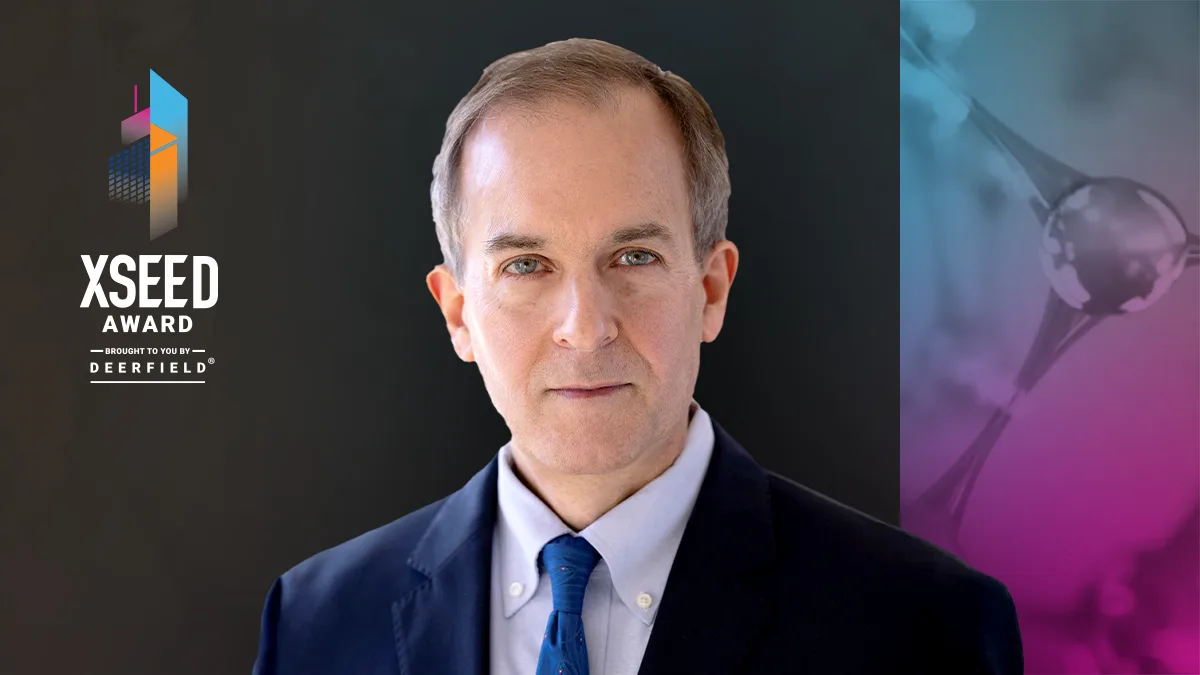
Overview
Working with his Einstein colleagues, Nicholas Sibinga, MD, earned a 2022 XSeed Award for identifying a protein pathway with potential to help prevent devastating neurodegenerative diseases including multiple sclerosis and ALS.
Embarked on adventurous science to solve nerve damage
In a milestone for neurodegenerative disease research, Nicholas Sibinga, MD, and his colleagues at Albert Einstein College of Medicine, identified a promising protein pathway that may help prevent devastating conditions like multiple sclerosis and ALS. This pioneering work earned Sibinga a 2022 XSeed Award.
Sibinga is a Professor of Medicine and Developmental and Molecular Biology at Albert Einstein College of Medicine whose primary area of focus is cardiovascular disease. But when he and a colleague embarked on “adventurous science” together, they made a significant step forward in understanding neuron damage in neurodegenerative diseases. This finding is pointing to a new approach to preventing this damage, which could ultimately save tens of thousands of lives.
Cure: Take us back to the beginning. Did you always want to become a scientist?
Nicholas Sibinga: No, actually. I have to admit that in high school I found biology rather boring. My classes seemed to focus on memorization and naming things. We had to identify odd structures like “rough endoplasmic reticulum” on poorly drawn pictures of cells.
I found chemistry to be much more interesting, and when I started to learn (and later, do) molecular biology, I found a resonance with other interests that I had developed during high school — like disassembling and rebuilding car engines and brake systems. This was not just memorization — you could tweak the system, formulate hypotheses, and test them!
In college I actually started out studying philosophy because I wanted to understand how people tried to understand existence. I didn’t find much satisfaction in it so I moved more into the realm of explanations of the natural world. The more I learned about theories of evolution, the more interested I became in learning about the underlying biology.
Cure: What was the path that took you to where you are today?
Sibinga: As I learned clinical medicine, I particularly enjoyed cardiology, where you could assess a patient's physiological state based on the history and physical exam, formulate a treatment plan, and then implement it and see if you were on the right track.
When I learned about the burgeoning field of vascular biology and its relevance to cardiology practice, I found a great fit between my clinical and research interests. I have since developed a much greater appreciation of those mysterious cellular structures.
Cure: What conditions does your current area of research aim to address?
Sibinga: From the early stages of my clinical training, I have been impressed by the sheer volume of patients who suffer from vascular disease — those presenting with incredibly common conditions such as heart attack, heart failure, and stroke.
There has been tremendous progress in recent decades in what clinicians can offer such patients, but the volume has not subsided, and I continue to believe that we could do more to prevent these conditions rather than to react to them to control the damage.
While working to understand the basic function of macrophage cells in vascular disease, I began working with my colleague from Einstein, Sayan Nandi, whose complementary expertise helped shape our research. Together we identified a protein pathway associated with neurodegenerative diseases such as multiple sclerosis and ALS. This work could open the door to using drugs to target these pathways and potentially prevent these diseases.
Cure: You won the Cure XSeed Award in 2022. How did the seed funding change the trajectory of your research? What have you been able to accomplish over the past two years that you might not have without the funding?
Sibinga: The XSeed Award has been a great confidence builder to think in a more adventurous way, in both scientific and entrepreneurial senses. By putting together a credible team, I was able to move into an area distinct from my established research track record.
The award has provided us with support at a very early stage of a project with great potential. We continue to work on this project and are now at a point — thanks to the XSeed support — where we believe we can get more traditional grant-based funding to continue the progress.
Cure: From your perspective, why are the XSeed Awards different? What advice would you give to other labs or biotech startups who are thinking about whether to apply for the program?
Sibinga: As I mentioned, I believe the XSeed Award supports adventurous science — more so than more conventional mechanisms, even those designated as “high-risk, high-reward.”
I think that creativity in science is often under-recognized as an important part of the process. In science, our insights ultimately need to be grounded in reality, which is why it’s so compelling — but progress may come from unexpected angles, or from individuals who don't share the same experience, background, or exposures.
So the advice I would give to other scientists is, turn up the volume on your imagination, spin some “out-there” ideas, and see what happens.
Now in its fourth year, the XSeed Award program provides up to $250,000 grants to New York City minority- and women-led life science and healthcare startups working on novel preclinical drug development projects. Winning teams also join the ecosystem of Cure.®, a healthcare innovation campus in New York City. The teams receive peer-learning and office hours with investors, entrepreneurs, and business experts. Learn more.








